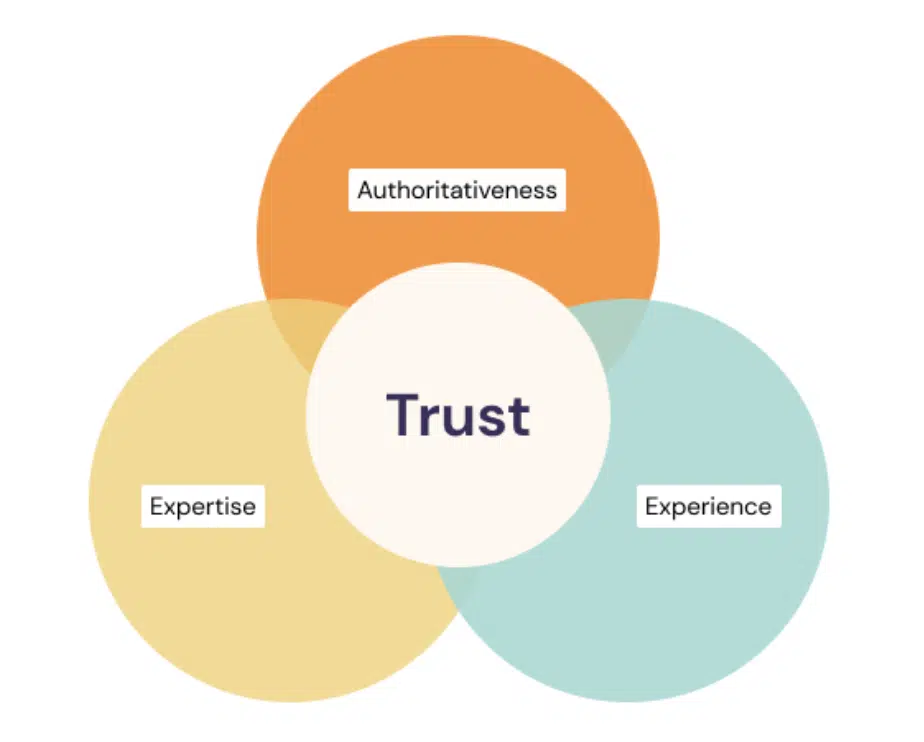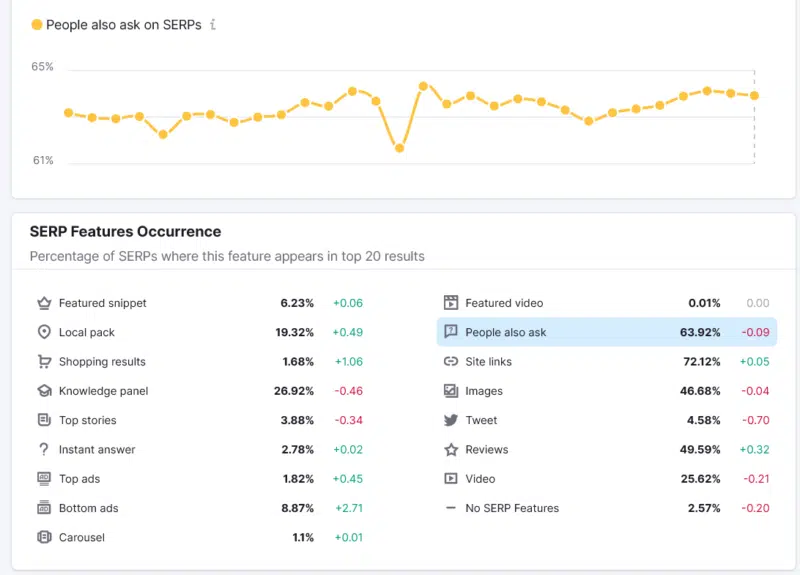SEO opportunities in 2023: Helpful content, E-E-A-T, People also ask
Want to advance your SEO game and get ahead of the competition? Here are three sustainable opportunities worth investing in this year.
AI search is arguably the hottest topic in digital marketing right now. I worry that SEO newbies might think all they need is an AI chatbot to “get rich quickly.” When everybody and their aunt push the next big thing, I try to be cautious and resist the initial hype.
After all, focusing on the fundamentals – optimizing your website, creating content and attracting links – still drives SEO results today.
But if you want to advance your game and get ahead of the competition, I’ll share SEO opportunities worth investing in this year.
SEO opportunities to seize in 2023
Instead of joining the AI bandwagon, I decided to take the “road less traveled” and look to Google’s own resources.
What did Google increasingly stress at the end of 2022 and early 2023? What shows up in Google results prominently and causes a bump in analytics without too many people hyping it?
Below are the things I have noticed.
1. Google’s new focus: Helpful content
The aftermath of the helpful content update (HCU) rollout was underwhelming. But soon after, Google declared it as a permanent search ranking system, not a single event. More related updates which had prominent effects across websites have taken place since.
The HCU did not initially affect automated websites considerably.
Stressing helpful content instead of simply “quality content” is a paradigm shift. Google has focused on quality for years, so this is a massive change to their philosophy.
Google’s guidance was always along the lines of “just create great content and the rest will follow.” Over time, they have become less reliant on links and can now determine the quality and usefulness of content algorithmically.
If you’ve been following Google’s advice, your site is likely filled with high-quality content. Good for you! But nowadays, it’s not enough.
We’re used to seeing quality content that give context, cite sources or provide additional links. Helpful content is more than this.
To be truly helpful, your content has to display the following characteristics:
Displays expertise
Helpful content is written by subject-matter experts who know how things work from first-hand experience.
In contrast, fully automated AI content or other cheap, mass-produced content merely summarizes other sources found on the web. It’s secondhand and not based on experience – equivalent to hearsay or gossip.
Solves particular problems
Quality content is more journalistic. You must check sources, verify the information and follow other links to get additional context and insights.
Helpful content, on the other hand, solves particular problems from the outset and:
- Does not distract but offers what people need when they need it.
- Is not content for content’s sake.
- Is not made for virality.
- Has a specific use case.
- Explains how to fix a common problem or deal with a known issue.
- Provides a standalone solution that does not require a click back to Google.
- Offers additional links and resources if the user wants to read more on the same topic.
Offers actionable advice
Helpful content explains a solution in general terms and offers step-by-step actionable advice for implementation.
For instance, many “how to start a blog” guides only explain how to set up WordPress even though it’s usually ready out of the box with many hosting providers and to buy hosting (from the company that pays the highest affiliate commissions).
Yet such “blogging guides” won’t say anything about how to write for a blog, how to get ideas (beyond keyword research) or how to make people link to you (it’s not just about outreach).
Also, such guides, meant to generate as much affiliate revenue as possible, will never tell you how hard it is to maintain a blog and update it regularly, let alone get traction.
Actionable advice is needed here – not what the site owner wants (make more money) but what the visitor wants to perform (learn how to blog).
Helps by itself
Helpful content does not require a form fill, a sign-up, a payment or a click back to Google search results to be of help. Ideally, the page has all the information the user needs, not a transit place or “blog spam” linking elsewhere.
Helpful content is not meant to distract, get attention and sell a product or service. To upgrade your content and make it helpful, you can:
- Answer specific questions.
- Make body text readable/scannable.
- Provide and/or list solutions.
- Optimize for specific user intent.
Recognize your existing content as an opportunity. Invest resources to turn them into helpful pieces by solving problems that people ask for (see the last section).
2. Google’s people-powered ranking criteria: E-E-A-T

E-E-A-T is another notable change to Google’s guidance for search quality. Experience is a significant addition to the popular concept of expertise, authoritativeness and trustworthiness.
At first, I thought Google was referring to user experience, but I was wrong.
While they are fond of a clean UX, especially webpages uncluttered with ads above the fold and optimized for site speed, UX is not part of E-E-A-T.
The new “E” in E-E-A-T refers to the actual experience that people who created the content have. Google aims to reward first-hand experience. Again, it’s clear that they want to rank content from people familiar with a topic instead of merely auto-generated content.
AI tools do not have firsthand experience in dealing with many manual processes. Simply put, AI can’t cook, do yoga or play basketball. It can only study the theory and existing content and paraphrase it.
Even though AI can drive a car, direct missiles and chat, it’s usually not the same AI that generates content. Unless your Tesla AI bot starts blogging about the daily commute, there is no first-hand experience to benefit from.
Gain a competitive advantage by finding the right people and making them write for you. We are talking about experienced subject-matter experts who also exhibit authority on the web and have gained considerable trust from audiences.
Either you invest in yourself, your team and the capabilities required in your particular field or you reach out to people who already have them.
This is an excellent opportunity to stand out and differentiate yourself from the sea of mass-produced and often automated mediocre content.
In an era of overhyped AI content, Google wants to give power to the people who care and are knee-deep into the subject they cover. E-E-A-T is evident proof of that.
3. Google’s favorite SERP feature: ‘People also ask’ questions
To ensure you’re delivering helpful content, respond to actual demand. There is no better way to do so than looking at People also ask (PAA) questions. Google already shows them below most results for major search queries.
I noticed that PAA questions are beneficial to my SEO when I started getting thousands of visitors for one of the most popular navigational queries on the web. No, it wasn’t [google] or [facebook] but close: [twitter].
I was skeptical because I’ve experienced bugs and worthless traffic spikes. Not this time. After further investigation, I became a fan of PAAs.
PAAs are not new. They have been widespread for a few years and exploded in 2019. The PAA feature showed up half as often in July 2022 but bounced back since then.
As of January, 64% to 70% of search results had PAAs, according to RankRanger and Semrush data. This makes PAAs the second most important SERP feature after site links.

Enjoy their benefits traffic-wise while they are around. In the past, we had to mine third-party resources, such as:
- Forums (Facebook and LinkedIn groups).
- Q&A sites (Quora, StackExchange, even Reddit AMAs).
- Keyword research tools.
You can still do these. But it’s better to go straight to the source. Simply visit Google, search for most, even broad one-word queries in your industry and then look up the questions being served.
Before PAAs, featured snippets were the next big thing. But there were 10x more PAAs than snippets on Google by 2022, and featured snippets often led to zero-click searches. You often need schema markup to rank for snippets, which means additional work.
PAAs are different. They can increase traffic to previously less prominent sites (including my almost-dormant SEO blog). I earned a PAA for my Twitter resources post that listed Twitter’s pros and cons neatly in a table side by side.
You can do the same. All you need to do is provide a useful resource with common sense text formatting (tables, lists), and you’re all set.
Check out Jason Barnard’s article, Google brand SERPs: Why you must dominate People Also Ask, for a deep dive into PAAs.
Take Google’s advice with a grain of salt, but don’t ignore them
We don’t want to follow Google and believe everything they say blindly. They might omit things they don’t want you to focus on or use language that is hard to decipher. Read between the lines when it comes to official announcements and documentation.
Implement sustainable SEO tactics that will work long-term. They may not be as shiny as the latest AI-powered tool, but they will help you stay in business for years to come.
Contributing authors are invited to create content for Search Engine Land and are chosen for their expertise and contribution to the search community. Our contributors work under the oversight of the editorial staff and contributions are checked for quality and relevance to our readers. The opinions they express are their own.
Related stories
New on Search Engine Land